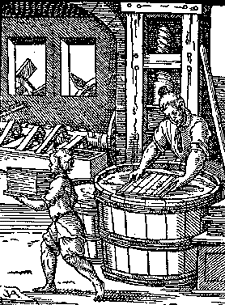| books
Medieval and Renaissance Book Production - Manuscript Books
 There is a widely held, yet erroneous, belief that the invention of the book was concurrent with the invention of printing. Somehow it is assumed that the act of printing--that is producing a book by mechanical means--endows the finished product with that essence that embodies a book. After all, the hand-produced book is called a manuscript, not simply a book, and early-printed books are called incunabula, books in their infancy. We are accustomed to think of the periods of manuscripts and printed books as distinct. Traditionally a scholar working in one of these fields has known little of the other field. Even our libraries have perpetuated this dichotomy: manuscripts are always separate from printed books, both administratively and physically. Yet historically this is a false dichotomy. The printed fifteenth-century book was a direct imitation of the contemporary manuscript book. Yet perhaps talk of imitation is misleading. Gutenberg never intended to imitate anything or mislead anyone: he was merely making books by a new means. The end product was really little different than the product of the scriptorium. It was the means of production which was revolutionary, not the book itself. The book, or more properly the codex, was invented in the first century AD, and has continued to this day with relatively few changes There is a widely held, yet erroneous, belief that the invention of the book was concurrent with the invention of printing. Somehow it is assumed that the act of printing--that is producing a book by mechanical means--endows the finished product with that essence that embodies a book. After all, the hand-produced book is called a manuscript, not simply a book, and early-printed books are called incunabula, books in their infancy. We are accustomed to think of the periods of manuscripts and printed books as distinct. Traditionally a scholar working in one of these fields has known little of the other field. Even our libraries have perpetuated this dichotomy: manuscripts are always separate from printed books, both administratively and physically. Yet historically this is a false dichotomy. The printed fifteenth-century book was a direct imitation of the contemporary manuscript book. Yet perhaps talk of imitation is misleading. Gutenberg never intended to imitate anything or mislead anyone: he was merely making books by a new means. The end product was really little different than the product of the scriptorium. It was the means of production which was revolutionary, not the book itself. The book, or more properly the codex, was invented in the first century AD, and has continued to this day with relatively few changes
[more]
thanks to BookLab II |

